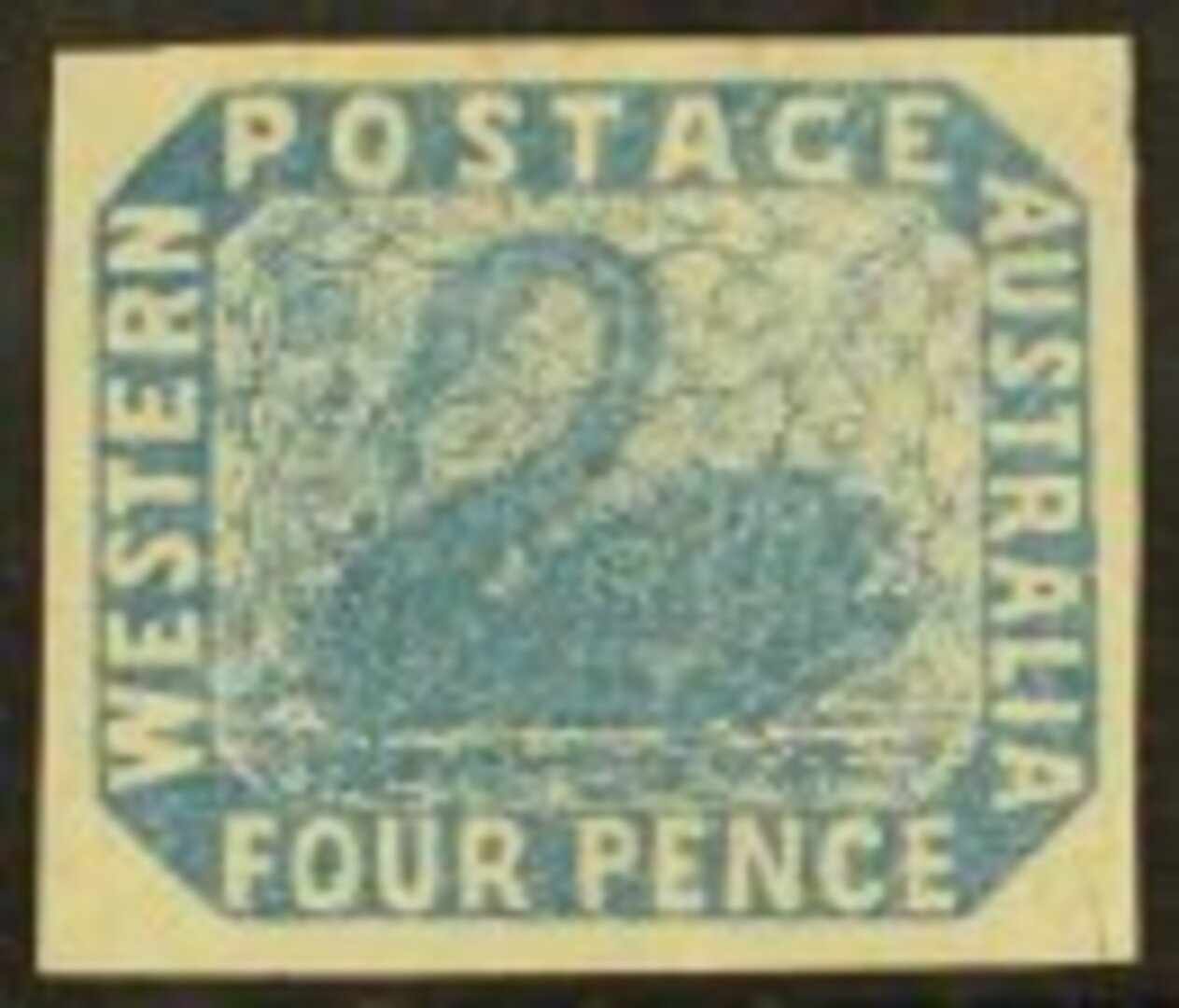In 1854 Western Australia issued her own “Penny Black” stamp to be used for local letters up to half an ounce or for the military concessionary rate to England. Depicting a black swan indigenous to the area and also as a reference to Western Australia’s origins as the Swan River Settlement founded by the British in 1828, the stamp was designed and recess-printed by Perkins Bacon with an engine- turned background, another similarity to the more famous British penny black.
One million of these stamps were printed and sent from England together with the plates, printing press, the swan watermarked paper and the black ink. The ungummed sheets were supplied to Post Offices together with a pair of scissors, a pot of gum and a brush. Today the largest intact unit is a block of just 60 stamps.
Even before the one penny was issued it was seen that postage labels with higher values would be required. The production of engraved metal plates was beyond the resources of the tiny colonial authority so both a 4d blue and 1s brown stamp was produced by the government lithographer.
The process was incredibly difficult. A transfer was taken from the newly- arrived one penny plate and two blocks of 60 were laid down on a lithographic stone, the frames were then carefully removed by acid. Then a small lithographic stone was produced with a frame for the new 4d and 1s values and placed, one at a time, around the remaining 120 swan vignettes. Once this painstaking process had been completed for each of the 60 positions four transfers were taken and laid down together to make a stone of 240 impressions for each new value.
So difficult was this process that one impression of the 4d had its frame accidently inverted so when the four tranfers were made it ensured that four ‘inverted frame’ errors were to occur on each sheet of 240 stamps. Although a good number must have been sold this famous mistake was first reported to philatelists in 1868 and still only 14 are known to have survived.
There was a further lithographic design, a 2d, produced in 1857 and by 1860 stamps were to be produced both in the colony and in London by recess and later typography but for the remaining part of the 19th Century every design bore the black swan as its centrepiece.
Apart from the Basel Dove stamp of 1852 these wonderfully atmospheric stamps remain amongst the earliest to clearly depict an animal or anything else of a topical nature, perhaps this has helped their popularity amongst philatelists since the very beginnings of our wonderful hobby.


 General
General
 General
General
 General
General